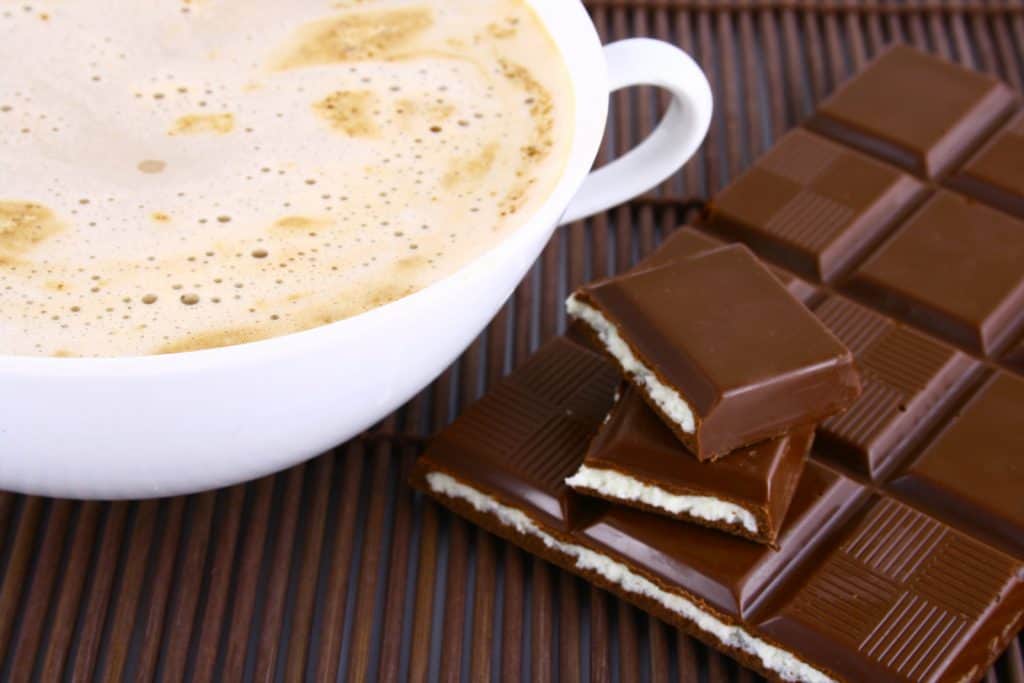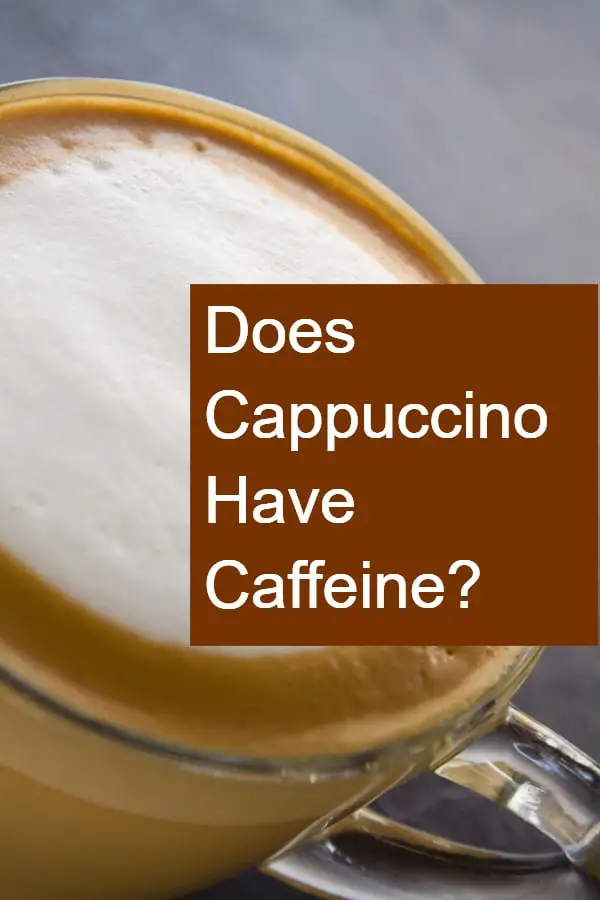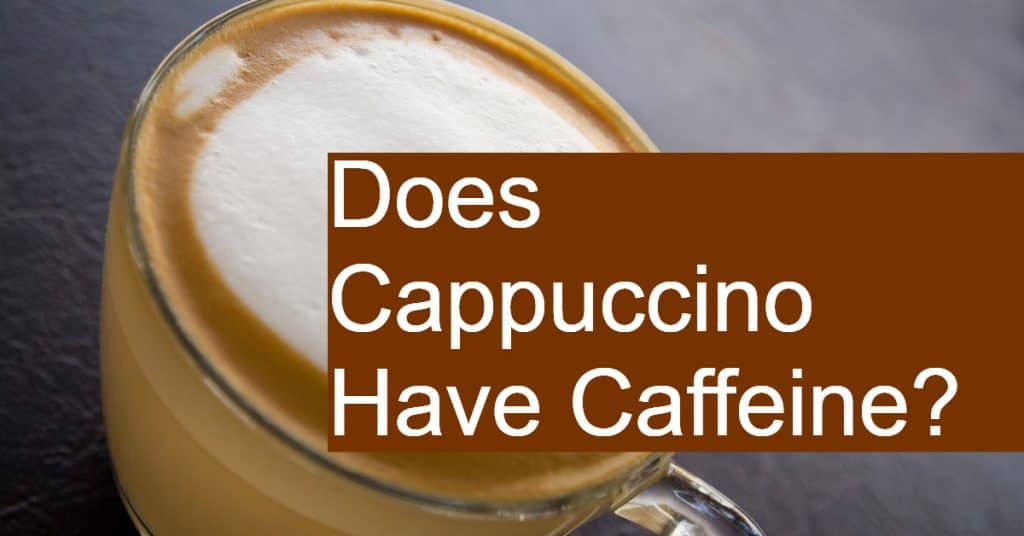It’s a universally agreed-upon truth. There’s nothing like a cup of cappuccino in the morning.
More than a century ago, the drink used to be popular in Viennese coffee houses. It was an instant hit when it made its way across the sea. Since then, we just haven’t stopped drinking it.
Everybody knows it: there’s caffeine in coffee. It’s where you get your buzz in the morning.
Caffeine is a psychoactive substance with many side effects. Consuming an overload of it can lead to many risks. It’s understandable why you’d want to track your caffeine intake.
Does cappuccino have caffeine? Well, you’re about to find out.
Is There Caffeine in Cappuccino?
To answer your question shortly: Yes. There’s caffeine in cappuccino.
Cappuccino is espresso with foamed milk. Milk doesn’t have any caffeine, so what we should be looking at here is the espresso.
Espresso is a particular style of making coffee that’s Italian. To make an espresso, you need two things. A good espresso machine is a must, along with fine grind coffee grounds.
Espresso is prepared by forcing steam through your fine grind coffee grounds. This helps extract aromatic oils, volatile organic compounds (VOCs), and caffeine.
How Much Caffeine Is in a Cup of Cappuccino?
Now, the quantity of caffeine in your cappuccino can fluctuate.
Remember, the variant here is the espresso. So how much of espresso is in your cappuccino?
Usually, espresso is served as 1 oz shots. Yet, your cappuccino could contain 1, 2, or 3 shots of espresso.
One single shot of espresso could contain 30-100 mg of caffeine. How much caffeine depends on the type of coffee and beans that’s used for making the shot. This might seem like a lot for such a small, single shot. But when considered comparatively next to drip coffee (can you make espresso in a drip coffee maker?), a cappuccino has a modest amount of caffeine content.
The caffeine content in your cappuccino is usually dependent on the type of espresso shot. A ‘ristretto’, for example, has half the water of a usual espresso shot. It’s considered to be the smallest, and also the strongest.
Yet, ‘normale’ is the most common espresso shot. If you order a cappuccino (What’s the difference between a Cappuccino and a Frappuccino?) from a coffee shop, this is most likely the espresso shot they’d use.
The longer espresso shot is called ‘lungo’. It has double the amount of water of the normal shot. The amount of coffee grounds in it is the same as in a ‘normale’ or a ‘ristretto‘.
Another thing that factors into the caffeine content in your drink is the type of beans. Certain types of coffee beans can have less or more caffeine than other types.
Which type of beans and what kind of coffee you use with your cappuccino matters. For example, an Arabica coffee bean has less caffeine than a Robusta coffee bean per serving.
Is a Cappuccino Stronger than Coffee?
Now that we’ve established the presence of caffeine in cappuccino, there are a few questions to be asked. One of them probably is, “Is a cappuccino stronger than coffee?“
It depends on what you mean by that. Is it stronger in taste, or is it stronger in caffeine?
The roast of the bean is detrimental to the strength of your coffee’s taste. Yet, it’s not directly detrimental to the strength of caffeine.
The roasting has a direct effect on the size of the bean itself. However, its effect on the caffeine content is trivial.
When a bean undergoes roasting, it gets bigger in size. To simplify: the longer you roast, the bigger the size.
This doesn’t affect the amount of caffeine in any way (Do cream, milk, or sugar reduce the caffeine in your coffee?). The mass remains the same. The amount of caffeine remains the same. However, the volume increases.
So while a really dark Seattle roast tastes stronger, it doesn’t necessarily mean it’s also stronger in caffeine.
Now assume everything else stays constant. If we’re talking volume, espresso will have stronger caffeine than normal drip coffee. Espresso just extracts more caffeine to the high-pressurized nature of its preparation.
Yet, whether your cappuccino or coffee is stronger in caffeine depends on the amount of espresso. How many shots are present in your cappuccino? If you have two shots of espresso in your cappuccino then you’ll end up with 60 to 200 mg of caffeine.

Does Cappuccino Mix Have Caffeine?
We all love low-maintenance coffee. It might not taste premium, but it gets the job done. Now you’re probably wondering about an instant cappuccino. Does it have the same level of caffeine present in a barista-style cappuccino?
Well, it’s heavily variable. Some cappuccino mixes contain no caffeine, so you can enjoy your coffee at night.
However, most cappuccino mixes have some caffeine. Yet they contain much less of the psychoactive substance than your standard cappuccino. For example, a 4 oz cup of instant coffee will grant you 35-105 mg of caffeine.
Comparatively, a similar amount of drip coffee or filtered coffee will grant you 85-135 mg of caffeine.
A decaffeinated instant cappuccino mix will grant significantly less caffeine compared to its caffeinated version. It roughly has 0.1 percent of the original amount.
Does a Latte or Cappuccino Have More Caffeine?
Well, a latte isn’t that much different from a cappuccino in the first place. Both lattes and cappuccinos are made using espresso. The variation lies in the amount of milk foam and steamed milk.
With a cappuccino, you use a shot of espresso. Then, you put about an inch or two of steamed milk. This is followed by a similar amount of milk foam.
With a latte, you use the same amount of espresso. The steamed milk is significantly more than it is in a cappuccino. The amount of milk foam you include is also decreased.
So it’s true that when comparing cappuccino vs latte one might taste a little weaker due to the amount of steamed milk in it. However, if they’re made by the same coffee shop, then they contain the same amount of coffee.
In this case, they contain one shot of espresso. Therefore, both lattes and cappuccinos contain as much caffeine.
How Much Caffeine Is in an Espresso?
Naturally, espresso has more caffeine by volume than ordinary coffee (What Is the Difference Between Coffee and Espresso?). This goes back to the nature of extraction. Espresso has a more effective extraction method that produces more caffeine. High surface area, high temperature, and high pressure – it just gets more.
Amounts are variable, of course, but there are rough estimates:
- A 1 oz shot of espresso has 30-100 mg of caffeine per shot.
- A double shot of espresso, called a Doppio, will have 60-200 mg of caffeine per serving.
Okay, so let’s imagine for a second that you’re going to Starbucks. You want to get one or two shots of espresso. How much caffeine would be in them?
Simply put, espresso is a coffee essence. There’s a reason why some mornings you might forgo your coffee for an espresso shot. It’s heavy stuff. It wakes you up and gives you an alert buzz.
All of that, of course, is due to the caffeine present in espresso and not on the amount of steamed milk added to it.
Now, that amount is hugely variable. How much caffeine is in your serving depends on the roast, kind of bean, and amount of coffee. The amount of caffeine also depends on which way the coffee is prepared. For example, did you use a regular espresso machine? Is it brewed coffee or drip coffee? Did you go for a French press?
Back to Starbucks. You ask for a shot of espresso. Behind the counter, they use a medium/dark espresso blend. This is the standard Starbucks espresso roast. Then, to the espresso machine, it goes.
At Starbucks one single shot of espresso has 75 mg of caffeine. Comparatively, an 8 oz cup of Starbucks drip coffee has 155 mg of caffeine. Two shots of espresso, which is around 2 oz, at Starbucks end up matching the caffeine content of one 8 oz cup of drip coffee – Percolator vs Drip Coffee.
Final Thoughts
Coffee addicts, we get you. All of us love a good, caffeine-induced jolt in the morning. But consuming too much of anything can often have negative effects on your health.
Cappuccino does have caffeine, of course. How much caffeine depends on the amount of espresso in your cappuccino, among other variables. A typical cup of cappuccino will have one or maybe two shots of espresso so you end up anywhere between 30 and 200 mg of caffeine content. A cup of drip coffee ends up at roughly 100 to 200 mg caffeine content. Depending on the coffee shop you might end up with less or roughly the same level of caffeine content when you look at cappuccino vs drip coffee.
This is where you set limits. Keeping track of the caffeine content you consume is recommended. No one’s telling you to put down your cup of cappuccino, but isn’t it good to know what’s inside your drink?
Now, drink up! If you want to vary your cappuccino experience then ask for a dry cappuccino the next time you’re at your favorite coffee shop!


